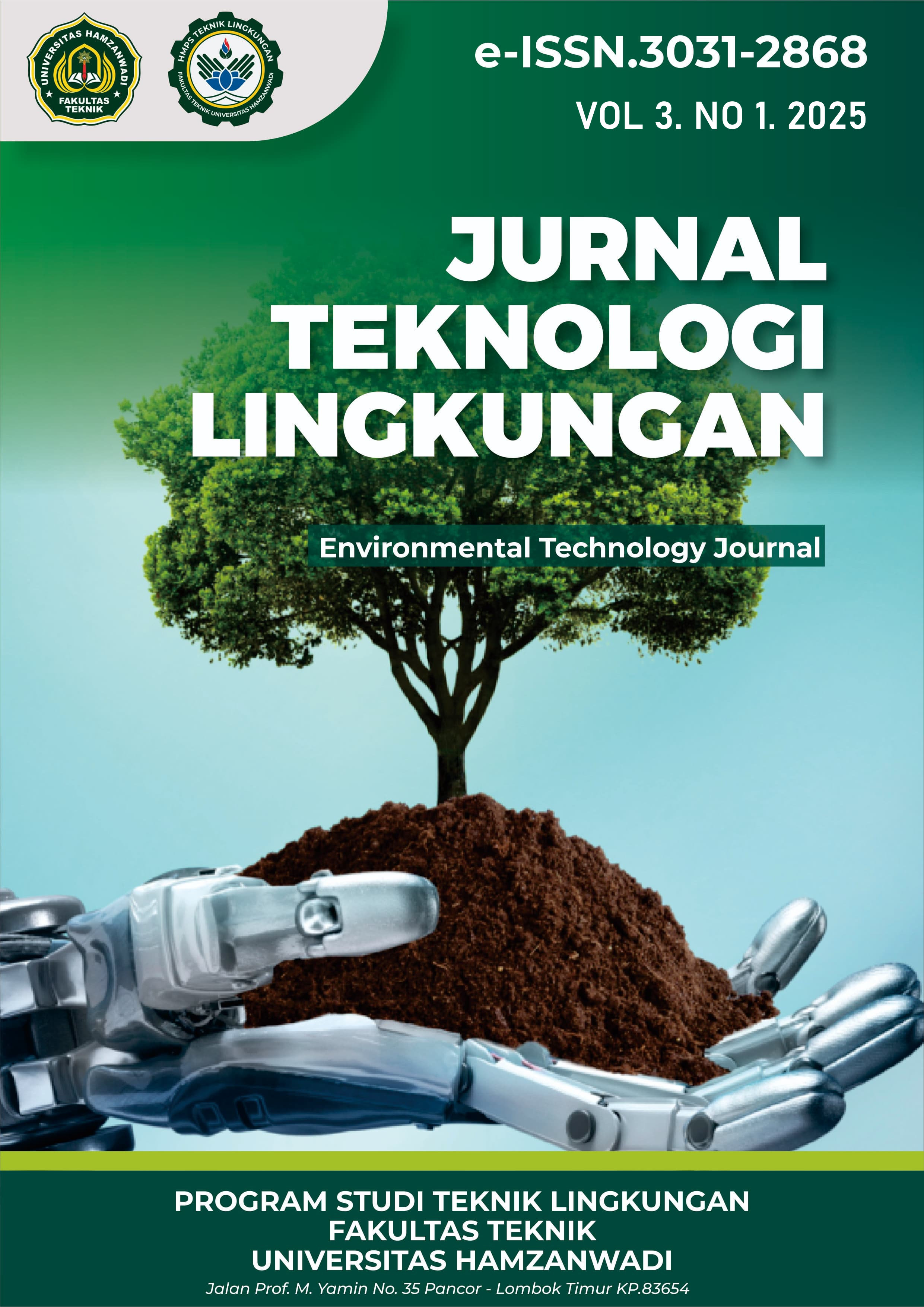Effectiveness Of Dowflow Filtration Model In Processing Waste Liquid Waste From Warung Kelor Restaurant Pancor Village Selong District
EFEKTIVITAS FILTRASI MODEL DOWFLOW DALAM MENGOLAH LIMBAH LIMBAH CAIR RUMAH MAKAN WARUNG KELOR KELURAHAN PANCOR KECAMATAN SELONG
DOI:
https://doi.org/10.29408/jtl.v3i1.28880Keywords:
BOD, COD, TSS, Ammonia, Oil and fat downflowAbstract
Wastewater from washing restaurants contains many hazardous substances that can reduce environmental quality. Pollutants contained can be BOD, COD TSS, Ammonia, and Oil and Fat. Restaurant liquid waste needs to be treated first before being discharged into the environment or water bodies. One method of wastewater treatment that is quite effective in neutralizing hazardous substances is the downflow filtration system. This study aims to determine the effectiveness of the downflow filtration method of zirconia sand, zeolite stone, activated charcoal and cotton media in reducing parameters contained in restaurant liquid waste such as pH, BOD, COD, TSS, Ammonia, and Oil and Fat Based on Permen LHK No. 68 of 2016.. The results of this study are that the processing of restaurant wastewater with a downflow filtration system is quite effective in reducing pH, BOD, COD TSS, Ammonia and Oil and Fat parameters. The results can be seen, namely pH before processing 7.4 Mg / L and after processing 7.4 Mg / L, BOD 2.79 Mg / L after processing 1.53 Mg / L, COD 36.7 Mg / L after processing 51.1 Mg / L, TSS 35.0 Mg / L after processing 4.00 Mg / L, Ammonia 32.0 after processing 0.222 Mg / L, Oil and Fat 32.0 after processing 1.00. From the parameter values of the processed results, the downflow filtration values of pH, BOD, TSS, Ammonia and Oil and Fat have met the standard quality standards, while COD has not met the standard quality standards for the average reduction results according to the Regulation of the Minister of Environment and Forestry No. 68 of 2016 concerning the Domestic Waste Quality Book. For industrial activities.
Downloads
Published
Issue
Section
License
Copyright (c) 2025 Jurnal Teknologi Lingkungan

This work is licensed under a Creative Commons Attribution-ShareAlike 4.0 International License.




